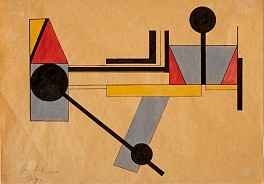BIOGRAPHY

American-Swiss (1893-1982)
Born in the US, Henri spent most of her career in Europe. Henri was a multi-faceted artist, who was first known for her paintings before making a name for herself as a major figure in avant-garde photography between the end of the 1920s and the beginning of the 1940s.
Early on she became friends with several figures of the avant-garde, including Hans Arp, Adrian Ludwig Richter, John Heartfield and Lázló Moholy-Nagy. She took classes with Paul Klee and Vassily Kandinsky at the Bauhaus in Weimar. In 1924 she moved to Paris, where she followed classes at the Académie Montparnasse, whose director was André Lhote, then at the Académie Moderne (founded by Fernand Léger and Amédée Ozenfant).
In 1927, after a visit to Bauhaus in Dessau, she abandoned painting in favour of photography and she would go on to exhibit in several important early avant-garde photographic exhibitions in the 20s and 30s. She was considered one of the foremost artistic photographers of her day. She was particularly known as a surrealist.
Like many, if not all female artists of the period, her career did not receive the same attention as her male peers. Henri was overshadowed by male artists, such as her teacher, László Moholy-Nagy, and other artists in the same period, such as Man Ray and Herbert Bayer. Additionally, her experimental photographic style was called “degenerate” during World War 2 (she spent the war years in Paris), which made her return to painting, and her work was ignored until feminist activists revived interest in it in the 1970s.
The Jeu de Palm held a retrospective of her work in 2015.
